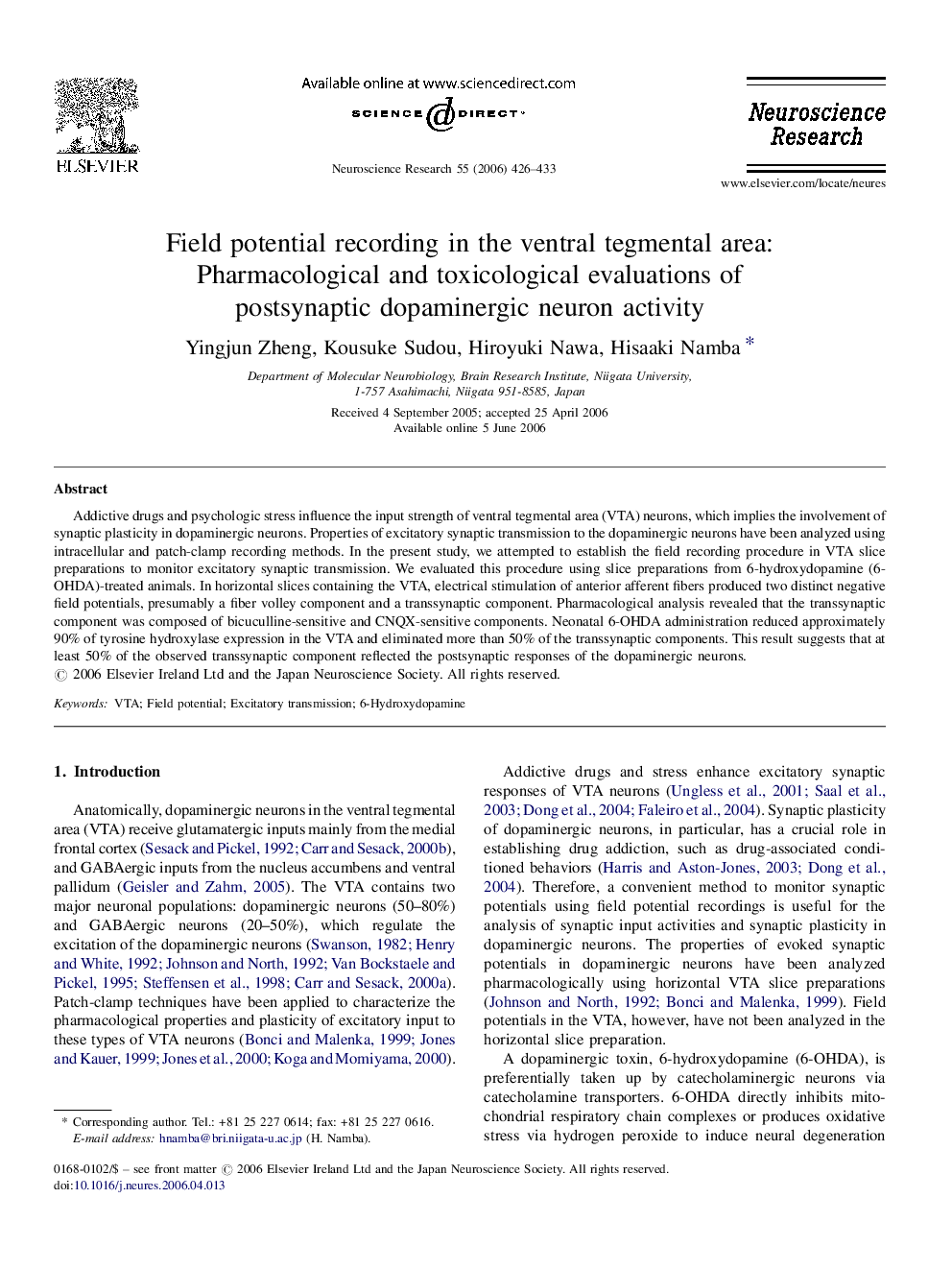| Article ID | Journal | Published Year | Pages | File Type |
|---|---|---|---|---|
| 4352557 | Neuroscience Research | 2006 | 8 Pages |
Abstract
Addictive drugs and psychologic stress influence the input strength of ventral tegmental area (VTA) neurons, which implies the involvement of synaptic plasticity in dopaminergic neurons. Properties of excitatory synaptic transmission to the dopaminergic neurons have been analyzed using intracellular and patch-clamp recording methods. In the present study, we attempted to establish the field recording procedure in VTA slice preparations to monitor excitatory synaptic transmission. We evaluated this procedure using slice preparations from 6-hydroxydopamine (6-OHDA)-treated animals. In horizontal slices containing the VTA, electrical stimulation of anterior afferent fibers produced two distinct negative field potentials, presumably a fiber volley component and a transsynaptic component. Pharmacological analysis revealed that the transsynaptic component was composed of bicuculline-sensitive and CNQX-sensitive components. Neonatal 6-OHDA administration reduced approximately 90% of tyrosine hydroxylase expression in the VTA and eliminated more than 50% of the transsynaptic components. This result suggests that at least 50% of the observed transsynaptic component reflected the postsynaptic responses of the dopaminergic neurons.
Related Topics
Life Sciences
Neuroscience
Neuroscience (General)
Authors
Yingjun Zheng, Kousuke Sudou, Hiroyuki Nawa, Hisaaki Namba,
